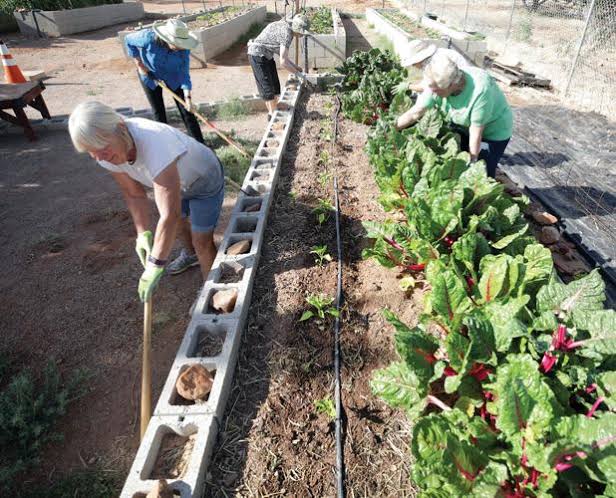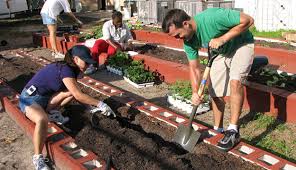Talking about how to start a community garden, starting a community garden means bringing people together to grow and share plants, fruits, and vegetables. It’s like creating a special place where neighbors join hands to cultivate a shared piece of land.
In the heart of starting a community garden is the idea of teamwork. Imagine a patch of soil transforming into a vibrant space where everyone contributes their time and effort. It’s not just about planting seeds; it’s about nurturing a sense of community.
The beauty of starting a community garden lies in its inclusivity. Anyone, regardless of their gardening skills, can participate. It’s a chance for beginners to learn from seasoned gardeners, sharing knowledge like seeds scattered in the wind.
As you embark on this journey, consider the impact on the environment. Community gardens breathe life into urban spaces, turning concrete jungles into green oases. Starting a community garden is a step towards sustainability, a small yet powerful way to connect with nature in the midst of city life.
Communication blossoms in a community garden. From planning the layout to deciding which plants to grow, every step involves conversation. People exchange ideas, preferences, and stories, creating a tapestry of connections that go beyond the soil and into the roots of human interaction.
The benefits extend beyond the joy of watching plants grow. Starting a community garden promotes healthier living. Fresh, organic produce becomes a shared resource, making it easier for everyone to access nutritious food. It’s a celebration of well-being, where the harvest becomes a symbol of collective health.
A community garden is a canvas for creativity. From colorful flowers to unique vegetables, each plot reflects the personality of its caretaker. Starting a community garden means adding splashes of creativity to the neighborhood, turning it into a living, breathing masterpiece.
In essence, starting a community garden is an invitation to slow down and reconnect. Amidst the hustle and bustle of daily life, it provides a space where people can gather, get their hands dirty, and cultivate not just plants, but friendships and a stronger sense of belonging. It’s a journey into the world of growth, unity, and the simple joys of nurturing life from the ground up.
Read Also: Fattening of Sheep and Goats Complete Guide
How to Start a Community Garden

Starting a community garden involves a few key steps to cultivate a thriving green space for everyone to enjoy.
1. Identify a Suitable Location: Look for an open space in your community that receives sufficient sunlight. Ensure access to water is convenient for watering the plants.
2. Gather Support: Reach out to neighbors, local businesses, and community organizations to build a team of enthusiastic individuals willing to contribute time and resources.
3. Gain Permission: Obtain permission from the landowner or relevant authorities to use the chosen space for a community garden. This may involve getting approvals or permits.
Plan the Layout: Collaboratively design the garden layout, considering factors like sunlight exposure, water sources, and the types of plants community members want to grow.
4. Establish Rules and Guidelines: Develop clear rules for the community garden, covering aspects such as plant care responsibilities, shared tasks, and guidelines for resolving conflicts.
5. Secure Funding: Explore funding options to cover initial costs like seeds, soil, tools, and any necessary infrastructure. This can involve seeking grants, donations, or organizing community fundraisers.
6. Organize Workdays: Schedule regular workdays where community members come together to prepare the soil, plant seeds, and maintain the garden. This fosters a sense of shared responsibility and teamwork.
7. Encourage Education: Provide resources or organize workshops to educate community members on gardening techniques, sustainable practices, and the benefits of growing their own food.
8. Foster Inclusivity: Ensure that the community garden is inclusive and accessible to all residents. Encourage participation from diverse age groups and backgrounds.
9. Establish Communication Channels: Set up communication channels, such as a community bulletin board or online platform, to keep everyone informed about garden activities, events, and important updates.
10. Celebrate Successes: Acknowledge and celebrate milestones, whether it’s the first harvest or the completion of a community project within the garden. Recognize the efforts of contributors.
11. Maintain Sustainability: Emphasize sustainable gardening practices, such as composting and water conservation, to ensure the longevity and environmental friendliness of the community garden.
By following these steps, you can lay the groundwork for a vibrant and flourishing community garden that not only beautifies the neighborhood but also cultivates a sense of unity among its members.
Read Also: Sheep Production Process Complete Guide
Advantages of Starting a Community Garden

Starting a community garden comes with a multitude of advantages, enriching both individuals and the community as a whole.
1. Community Building: Community gardens foster a sense of belonging and camaraderie. People from diverse backgrounds come together, working side by side, which strengthens social bonds and creates a tight-knit community.
2. Health and Well-being: Growing and consuming fresh, locally sourced produce contributes to a healthier lifestyle. Community gardens provide access to nutritious food, promoting physical well-being and encouraging a more balanced diet.
3. Environmental Benefits: Community gardens enhance the environment by introducing green spaces in urban areas. They contribute to biodiversity, improve air quality, and create a more sustainable and resilient community.
4. Educational Opportunities: Gardens offer valuable learning experiences. Participants, especially children, can develop gardening skills, learn about plant life cycles, and gain an understanding of where their food comes from.
5. Economic Savings: By growing their own produce, community members can reduce their grocery expenses. This economic advantage becomes especially significant for families and individuals facing financial constraints.
6. Stress Reduction: Gardening has therapeutic effects, helping reduce stress and improve mental well-being. The act of tending to plants and being in nature provides a welcome respite from the demands of daily life.
7. Beautification of Neighborhoods: Community gardens transform empty spaces into aesthetically pleasing areas. The vibrant colors of flowers and the lush greenery contribute to the beautification of neighborhoods, increasing overall community pride.
8. Skill Development: Participants in community gardens acquire various skills, from gardening techniques to teamwork and leadership. These newfound abilities can extend beyond the garden, positively impacting other aspects of their lives.
9. Promotion of Sustainable Practices: Community gardens often embrace eco-friendly practices such as composting and water conservation. This promotes sustainability and encourages individuals to adopt more environmentally conscious behaviors.
10. Cultural Exchange: Gardens can become spaces for cultural exchange, as community members share their unique gardening traditions, recipes, and stories. This promotes diversity and a greater understanding of different cultures within the community.
11. Increased Property Values: The presence of well-maintained community gardens can positively impact property values in the surrounding area. Green spaces are often viewed as desirable and contribute to the overall appeal of a neighborhood.
12. Empowerment and Civic Engagement: Community gardens empower individuals to take an active role in their community. By participating in the planning and maintenance of the garden, residents become more engaged in civic activities and decision-making processes.
In essence, the advantages of starting a community garden go beyond the cultivation of plants; they cultivate a stronger, healthier, and more connected community.
Read Also: The Easiest Way to Fix Garbage Disposal Jam

